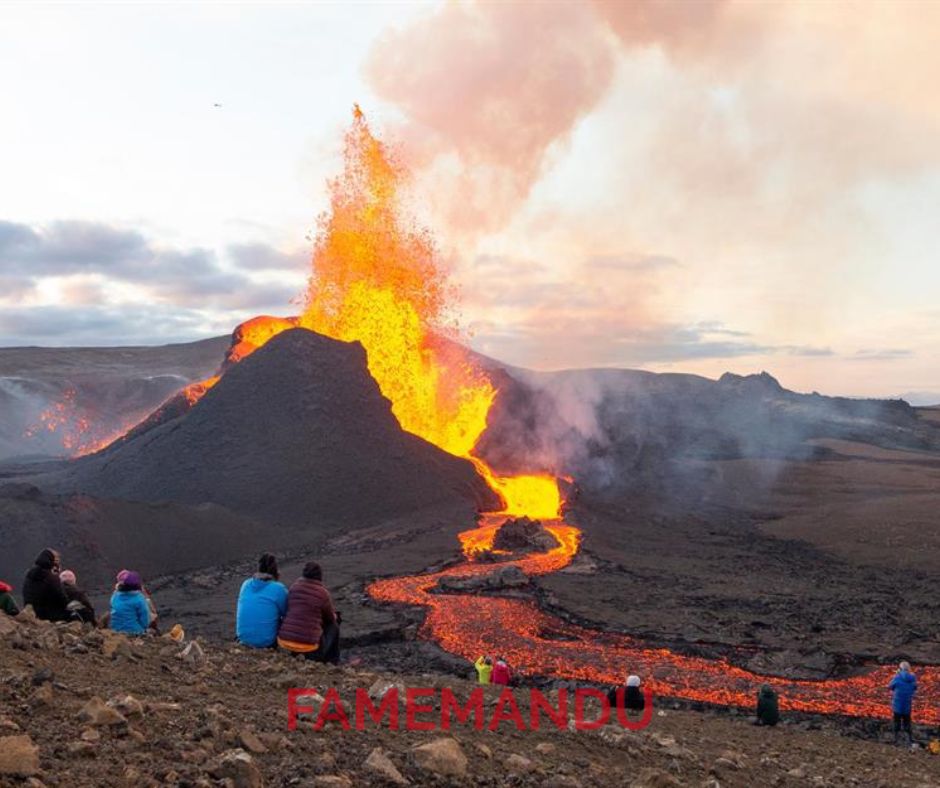It’s important to note that the term “dangerous” can be subjective and may vary based on individual perspectives and circumstances. Additionally, the safety of a destination can changes over time due to various factors. Here are 10 places that have been considered potentially risky for tourists at different times:
1. Mount Huashan (China)
Mount Huashan, located near the city of Huayin in Shaanxi province, China, is one of China’s Five Great Mountains. It is known for its stunning natural scenery, religious significance, and its reputation as one of the world’s most dangerous hiking trails. It is considered one of China’s sacred Taoist mountains and is home to several temples and religious sites. The mountain is known for its five main peaks, each with its own unique characteristics. It is famous for its perilous hiking trails, especially the plank walks along the South Peak. The plank walk is a narrow trail built along the side of a vertical cliff, and hikers are secured with safety harnesses. It offers breathtaking views but requires a good level of physical fitness and a head for heights. It has become a popular tourist attraction, drawing visitors not only for its religious and cultural significance but also for the thrill-seekers looking to conquer its challenging peaks and trails.
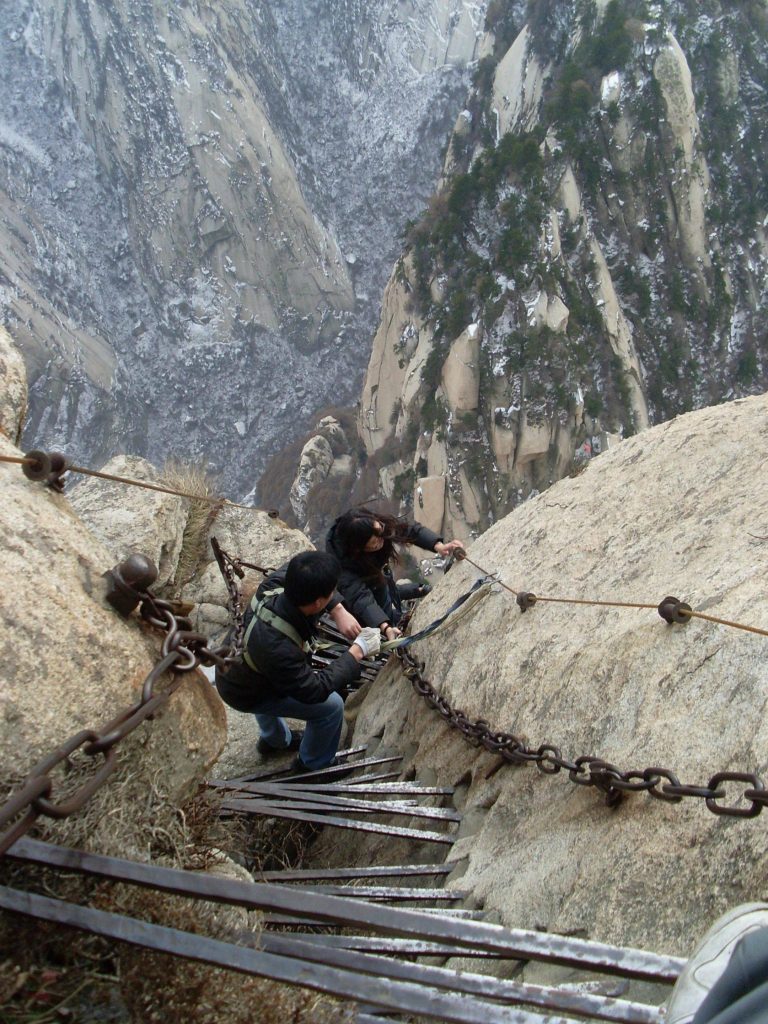
While Mount Huashan offers a unique and exhilarating hiking experience, it’s essential for visitors to be well-prepared, follow safety guidelines, and consider their own physical abilities before attempting the more challenging trails.
2. Trolltunga (Norway)
Trolltunga, which translates to “Troll’s Tongue” in English, is a spectacular rock formation situated in the Norwegian mountains. It is one of the most iconic and popular tourist attractions in Norway, drawing hikers and nature enthusiasts from around the world. It is located in the municipality of Odda in the Hordaland region of Norway. It is situated about 700 meters above Lake Ringedalsvatnet. The reward for completing the challenging hike is the breathtaking view from Trolltunga itself.

Before attempting the Trolltunga hike, it’s crucial for visitors to check weather conditions, be well-prepared with appropriate gear, and inform someone about their plans.
3. Devil’s Pool (Zambia)
Devil’s Pool is a natural rock pool situated on the edge of Victoria Falls, one of the most famous waterfalls in the world, located on the Zambezi River between Zambia and Zimbabwe. This unique and thrilling attraction offers visitors the opportunity to swim at the very edge of the waterfall, providing an exhilarating and memorable experience. The pool is situated right at the edge of Victoria Falls, and visitors can swim to the very lip of the waterfall and look over the edge. The experience of swimming in Devil’s Pool offers unparalleled views of the vast expanse of Victoria Falls, creating a unique and thrilling perspective of this natural wonder.
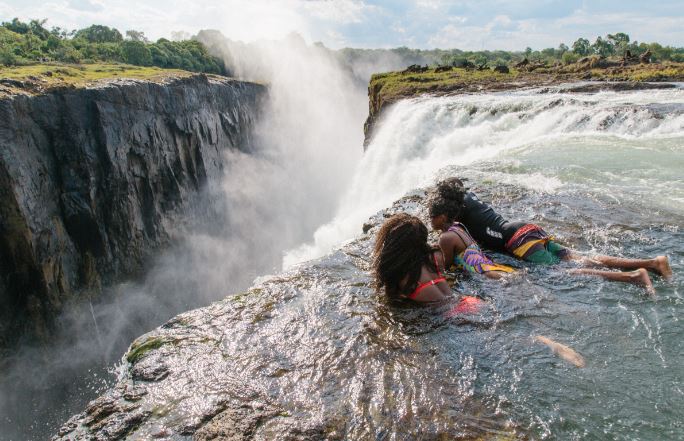
Visitors interested in experiencing Devil’s Pool should check with local tour operators for availability, safety guidelines, and any restrictions. It’s essential to follow the instructions of experienced guides to ensure a safe and enjoyable experience.
4. Hussaini Hanging Bridge (Pakistan)
Hussaini Hanging Bridge, located in the remote village of Hussaini in northern Pakistan, is considered one of the most dangerous bridges in the world. It is a rickety suspension bridge that spans the Hunza River, and while it serves as a vital crossing for the local community, it has gained attention for its precarious and challenging nature. The Hussaini Hanging Bridge is a narrow suspension bridge made of wooden planks and steel cables. It lacks many safety features that are standard on more modern bridges. Due to its challenging and thrilling nature, the Hussaini Hanging Bridge has become a unique attraction for adventurous tourists seeking an adrenaline rush and a taste of local life.
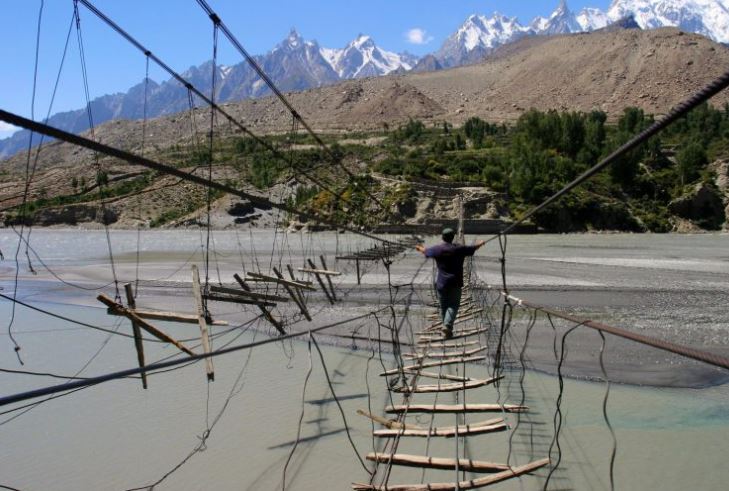
It’s crucial for anyone considering visiting such places to prioritize their safety, adhere to local guidelines, and be aware of the potential risks.
5. Kjeragbolten (Norway)
Kjeragbolten is a famous and thrilling tourist destination in Norway, known for a massive boulder wedged between two cliffs at the Kjerag Mountain in the Lysefjord. This iconic boulder has become a popular spot for daring hikers and adventure seekers. To reach Kjeragbolten, visitors need to undertake a challenging hike that typically takes 5-7 hours round trip. The trail offers stunning views of the surrounding mountains, fjord, and valleys. While it’s a popular attraction, visitors need to exercise caution and be aware of the inherent risks involved.
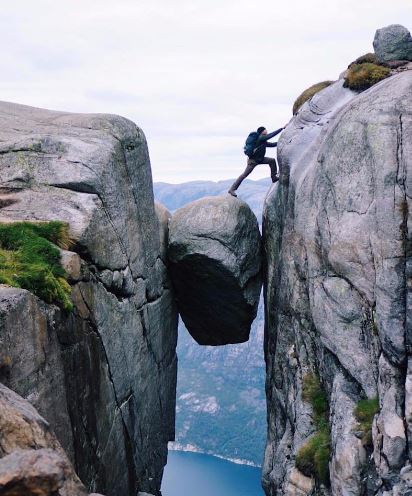
Visitors should be prepared for a strenuous hike, changing weather conditions, and the physical demands of reaching Kjeragbolten. It’s recommended to check weather conditions, wear appropriate clothing and footwear, and be mindful of personal limitations.
6. Volcano Villarrica (Chile)
Villarrica is one of Chile’s most active and iconic volcanoes, located in the Southern Andes near the town of Pucon. It is situated in the Andes Mountain range, within Villarrica National Park in the Chilean Lake District. The volcano is approximately 750 kilometers south of Santiago, the capital of Chile. The volcano and the surrounding area attract tourists and adventure seekers. Climbing Villarrica is a challenging but rewarding experience, and skiing down its slopes is a popular activity.
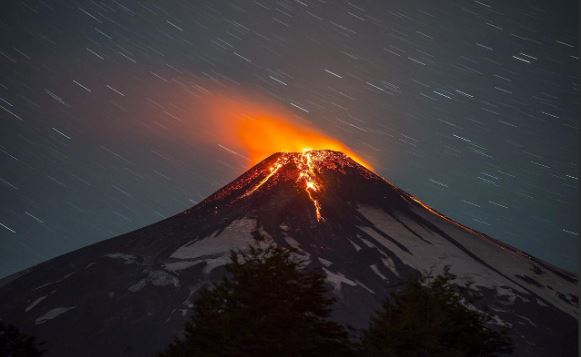
If you plan to visit Volcano Villarrica, it’s crucial to check for the latest information on its activity, adhere to safety regulations, and consider guided tours for a safer and more informative experience.
7. Mount Everest (Nepal)
Mount Everest, standing at 8,848.86 meters (29,031.7 feet) above sea level, is the highest peak in the world. It is part of the Himalayan Mountain range and straddles the border between Nepal and Tibet (Autonomous Region of China). The two primary base camps for climbers attempting to summit Everest are the South Base Camp in Nepal and the North Base Camp in Tibet. It is a formidable challenge due to extreme altitudes, unpredictable weather, crevasses, avalanches, and the risk of altitude-related illnesses such as altitude sickness and pulmonary edema.
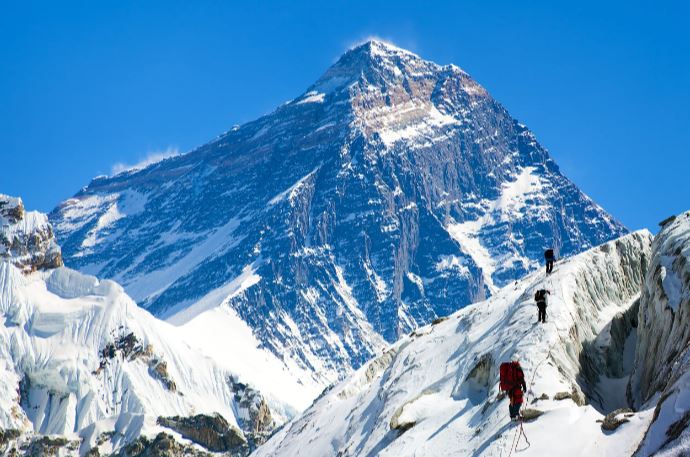
Climbing Everest is a significant undertaking that requires careful planning, physical fitness, and experience in high-altitude mountaineering. The trek to Everest Base Camp, on the other hand, is a popular adventure for trekkers seeking a challenging and culturally rich experience in the Himalayas.
8. Cliffs of Moher (Ireland)
The Cliffs of Moher are one of Ireland’s most iconic and breathtaking natural landmarks. Located on the western coast of County Clare, these majestic cliffs offer stunning views of the Atlantic Ocean and are a popular tourist destination. The cliffs rise to an average height of about 214 meters (702 feet) above sea level, and at their highest point, they reach approximately 214 meters (702 feet). O’Brien’s Tower, a round stone tower near the midpoint of the cliffs, was built in 1835 by Sir Cornelius O’Brien as an observation tower for Victorian tourists. Visitors can climb to the top of the tower for additional panoramic views.
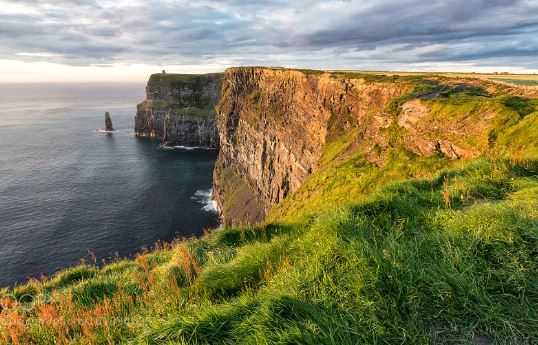
The Cliffs of Moher are not only a geological wonder but also a cultural and natural treasure in Ireland. Visitors are encouraged to respect safety guidelines, stay on designated paths, and appreciate the beauty and significance of this stunning coastal landscape.
9. Half Dome (California, USA)
Half Dome is an iconic granite dome in Yosemite National Park, California, USA. It is one of the most recognized symbols of the park and a popular destination for hikers and climbers. The summit of Half Dome stands at an elevation of 2,694 meters (8,842 feet) above sea level. There are multiple trails leading to Half Dome, with the most common being the Mist Trail and the John Muir Trail. These trails offer stunning views of waterfalls, valleys, and the surrounding wilderness. Apart from the popular hiking route, Half Dome is also a renowned rock climbing destination. Climbers from around the world attempt various routes, with the most famous being the “Regular Northwest Face.”
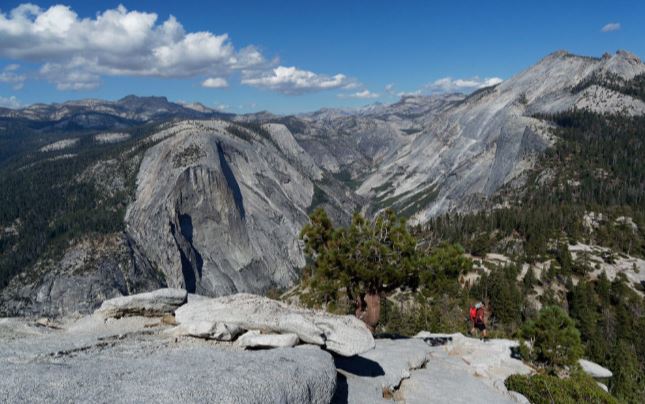
Half Dome is not only a physical challenge for hikers and climbers but also a symbol of the natural beauty and rugged landscapes found in Yosemite National Park. Visitors are advised to be well-prepared, follow safety guidelines, and obtain the necessary permits if planning to ascend Half Dome.
10. Yungas Road (Bolivia)
The Yungas Road, also known as “Death Road,” is a legendary and historically dangerous road in Bolivia that connects the city of La Paz to the town of Coroico. The Yungas Road gained notoriety as one of the most dangerous roads in the world due to its narrow width, steep cliffs, hairpin turns, and the lack of guardrails. The road starts at an elevation of around 4,650 meters (15,256 feet) above sea level and descends rapidly to about 1,200 meters (3,937 feet). The road posed numerous challenges to drivers, including unpredictable weather, landslides, and the difficulty of navigating sharp curves and steep descents. Despite its dangerous reputation, the Yungas Road has become a popular destination for mountain biking enthusiasts.

While the Yungas Road was once notorious for its high risk of accidents, the construction of a new and safer route has significantly reduced its dangers. The old road is still frequented by adventurous travelers seeking a unique and thrilling experience in Bolivia. Always exercise caution, choose reliable tour operators, and prioritize safety if considering any activities on the Yungas Road.


